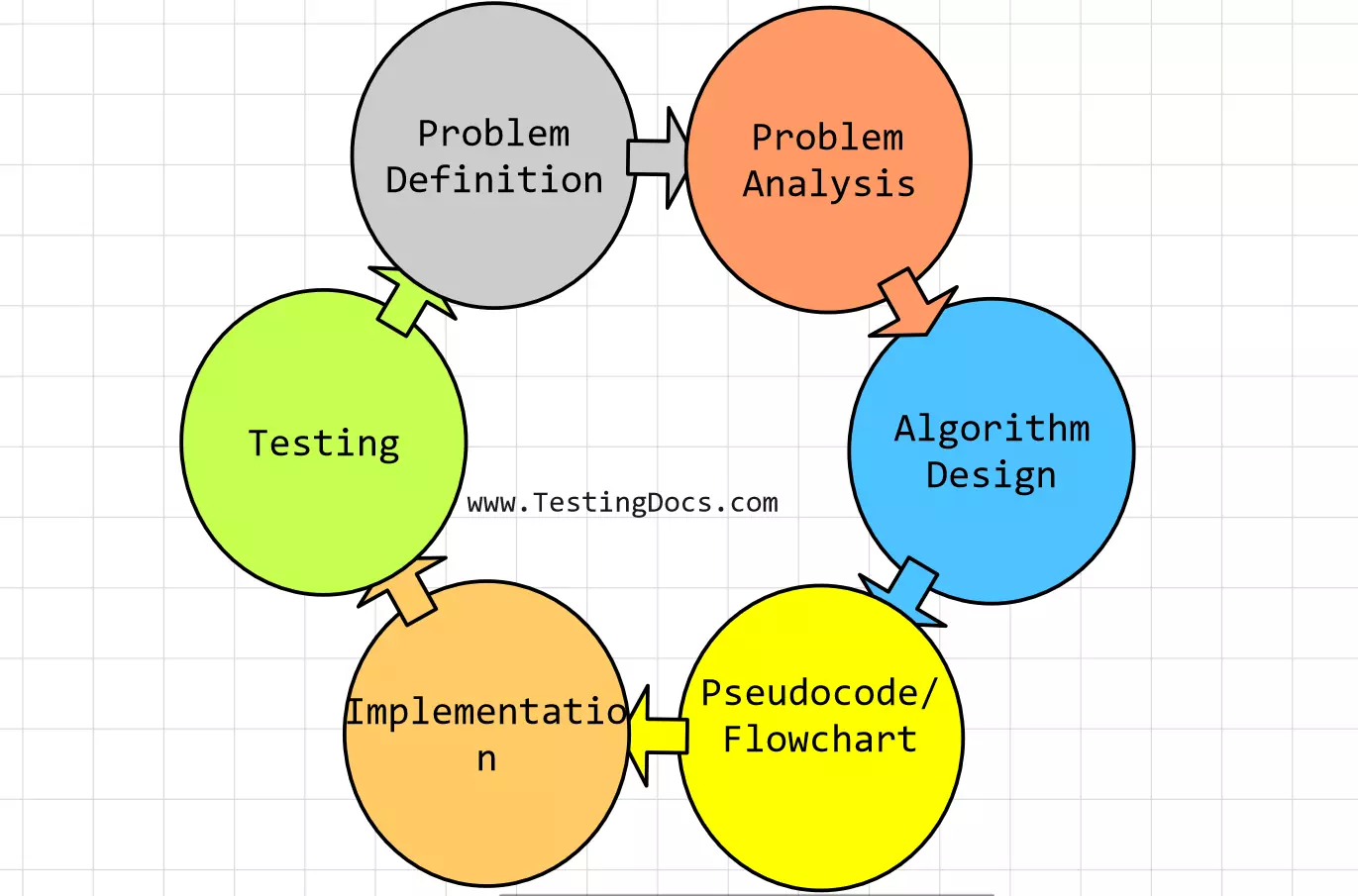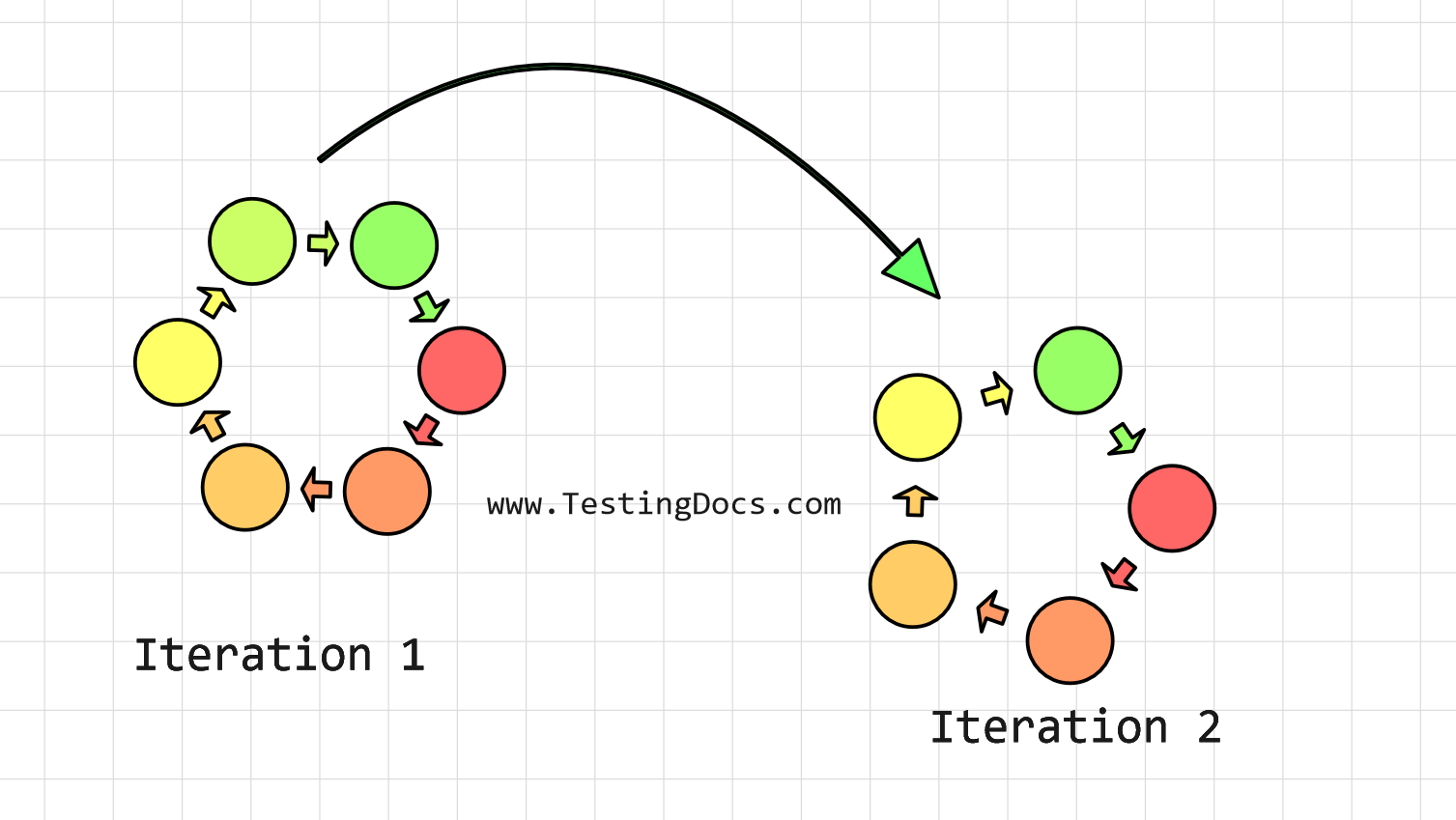Algorithm Development Steps
🧮 Algorithm Development Steps
In this tutorial, we will learn about the steps of algorithm development. Algorithm development is an iterative process that requires multiple iterations to refine and optimize the algorithm for the best possible results.
The process of algorithm development generally involves many steps. The general steps involved in algorithm development are as follows:
- 1️⃣ Problem Definition
- 2️⃣ Problem Analysis
- 3️⃣ Algorithm Design
- 4️⃣ Flowchart
- 5️⃣ Implementation
- 6️⃣ Testing
- 7️⃣ Documentation

💡Problem Definition
Clearly define the problem that the algorithm needs to solve. Clearly understand the problem statement so that a proper algorithm can be designed. This stage includes understanding the input data, desired output, and constraints or requirements.
✍🏼 Problem Analysis
Analyze the problem to understand its characteristics, complexity, and potential solutions. This may involve studying the data, identifying patterns, understanding the relationships between variables, and considering different approaches.
🛠️ Algorithm Design
Based on the problem analysis, design an algorithm that outlines the step-by-step process for solving the problem. This may involve selecting appropriate data structures, choosing suitable problem-solving techniques, and designing tools for defining the logic or flow of the algorithm.
👩🏻💻 Flowchart Development
A flowchart is a visual representation of the algorithm so that it is easy to understand. Create a high-level representation of the algorithm using flowcharts. Flowcharts use graphical symbols to represent the steps and flow of the algorithm.
💻 Implementation
Translate the algorithm design into a specific computer programming language. Write the code to implement the algorithm, considering the programming language’s syntax, data types, and control structures.
🔎 Testing
Test the algorithm by giving the test data and see if the desired output is generated. Test with various inputs to verify the correctness and effectiveness of the algorithm. Identify and fix any bugs or errors that may arise during testing. Testing may involve different types of inputs, including edge cases, to ensure the algorithm performs correctly in different scenarios.
📝 Documentation
Document the algorithm’s design, implementation details, and assumptions or limitations. This documentation helps others understand and use the algorithm effectively.
Complex algorithm design
Complex algorithm design may involve multiple iterations to redefine the development process. These stages are:
- 🎯 Evaluation
- 🎯 Iteration
- 🎯 Optimization

⚖️ Evaluation
Evaluate the algorithm’s performance against specific criteria, such as accuracy, speed, memory usage, and scalability. Compare it with other existing algorithms or benchmarks to determine its effectiveness in solving the problem.
🔃 Iteration
Based on the evaluation results, refine and iterate the algorithm to improve its performance further or address any shortcomings. This may involve revisiting the problem analysis, design, or implementation stages to fine-tune the algorithm.
🚀 Optimization
Optimize the algorithm to improve its performance, efficiency, or scalability. This may involve analyzing the time and space complexity of the algorithm, identifying bottlenecks, and making necessary adjustments or optimizations to enhance its performance.


